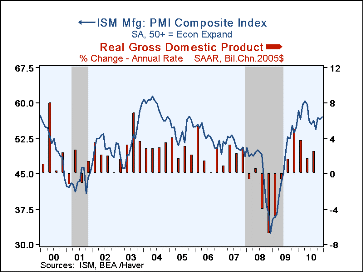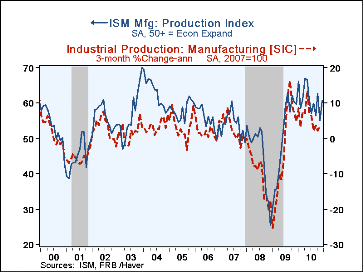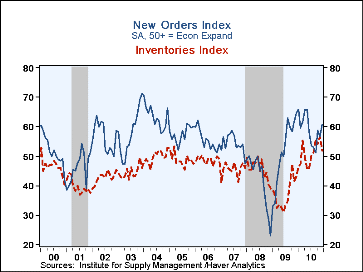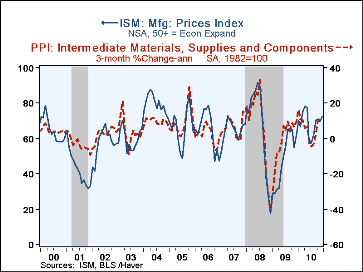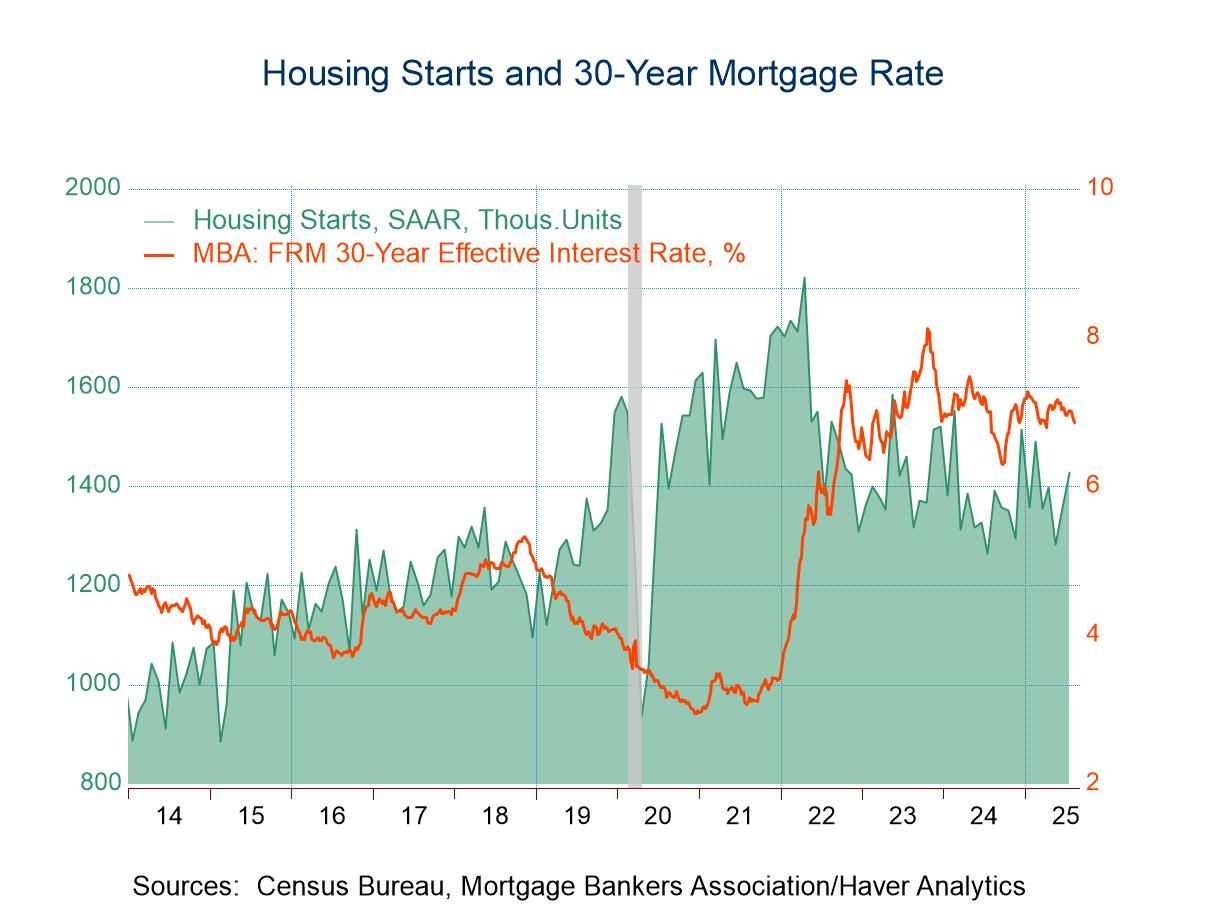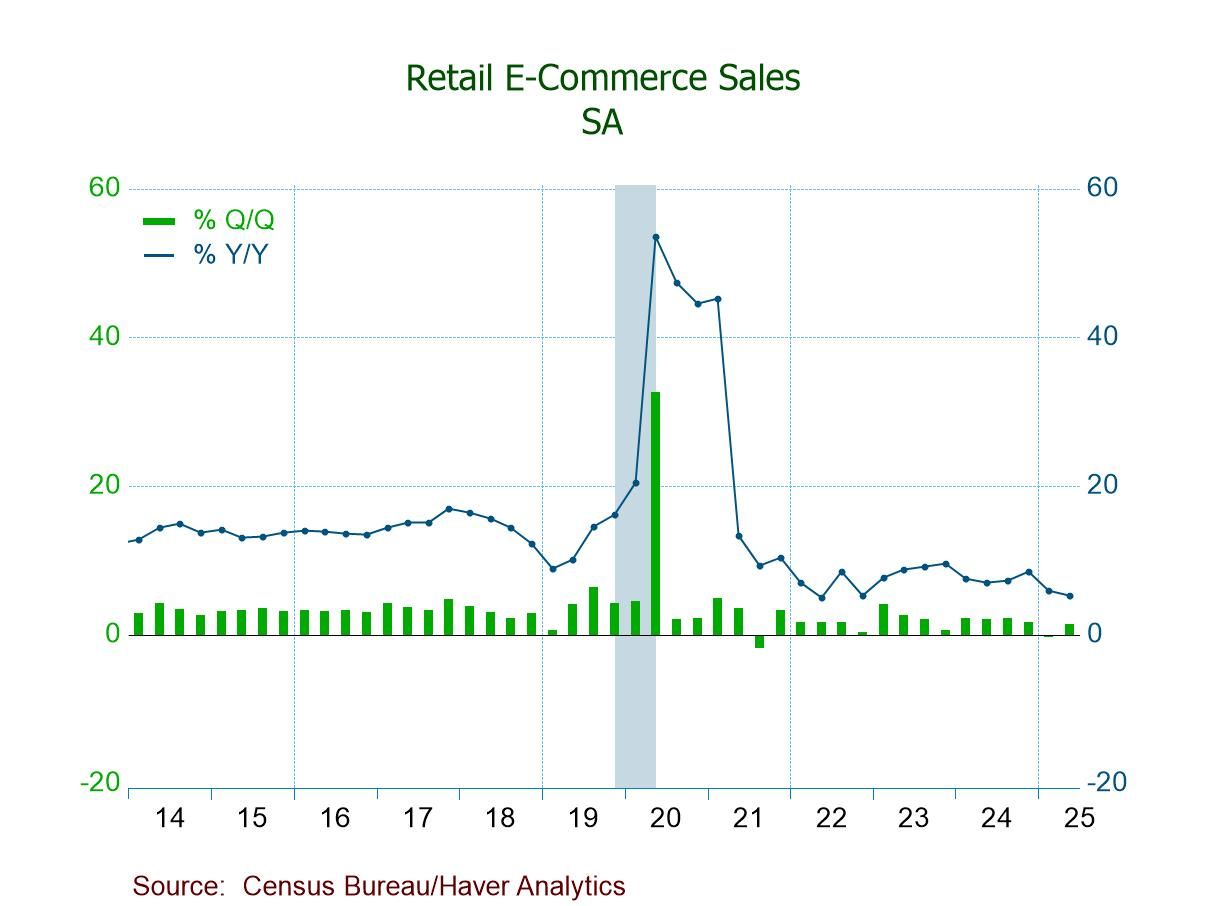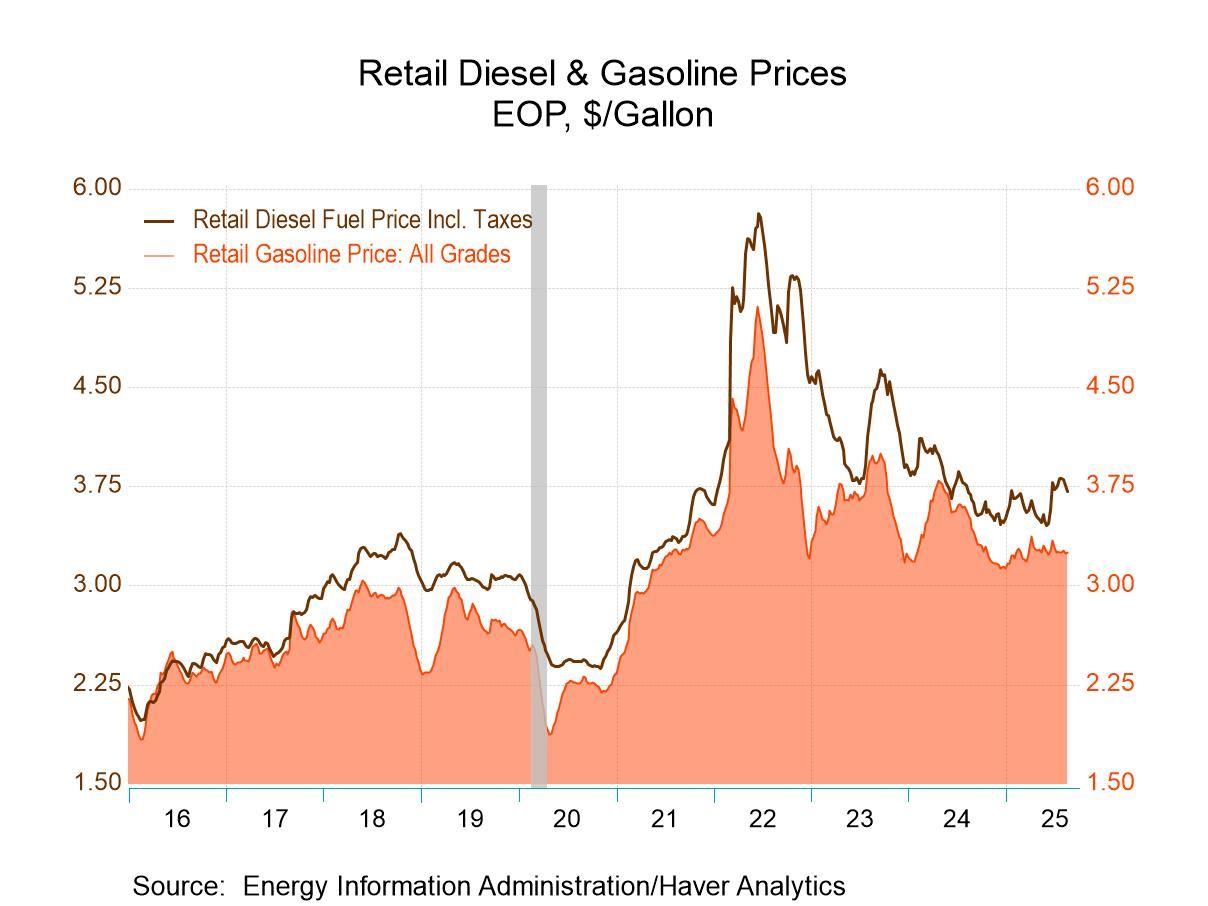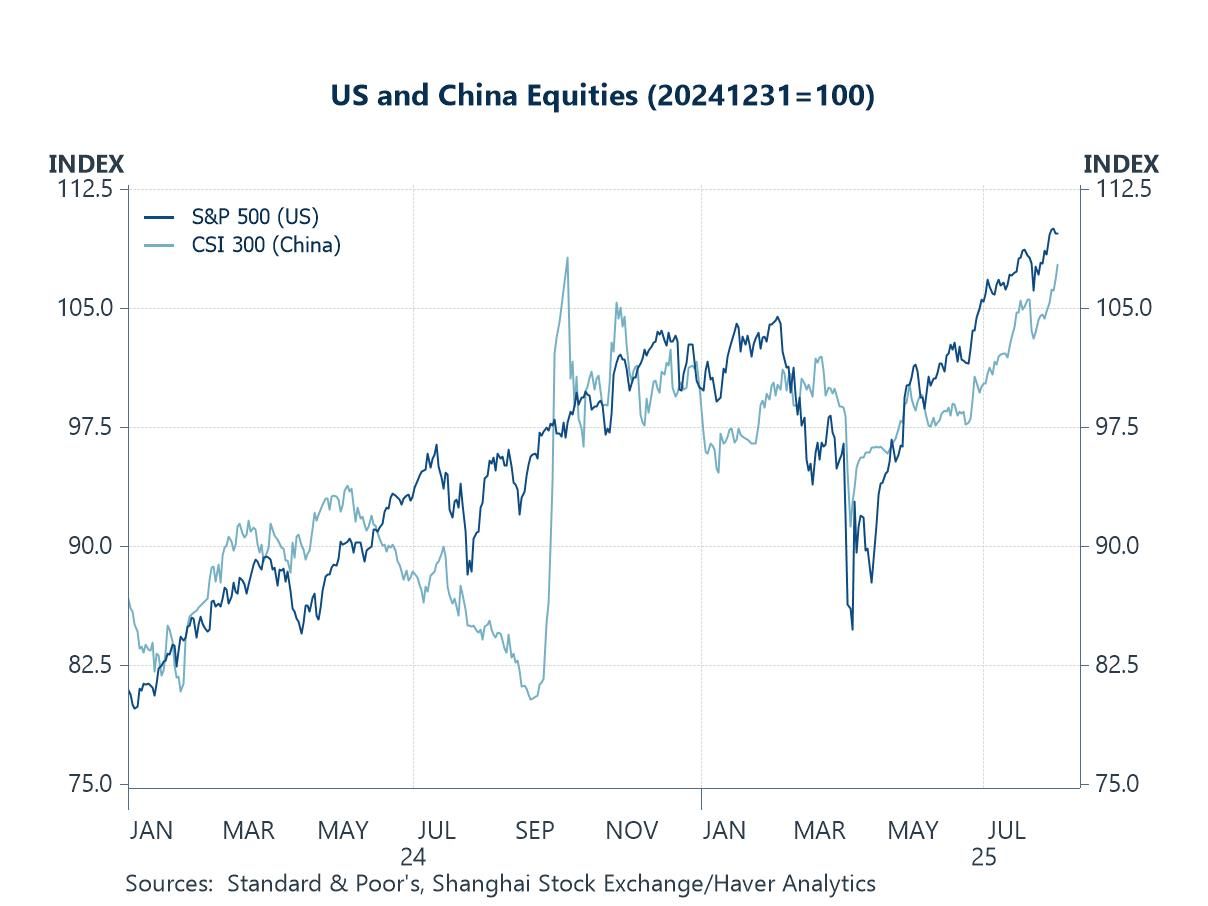 Global| Jan 03 2011
Global| Jan 03 2011U.S. ISM Factory Sector Index Rises to Highest Level Since 2004
by:Tom Moeller
|in:Economy in Brief
Summary
The Composite Index from the Institute for Supply Management increased just moderately last month to 57.0 from 56.6 during November. A slightly lesser gain to 56.8 had been expected by the Bloomberg Survey. Despite the modest m/m [...]
The Composite Index from the Institute for Supply Management increased just moderately last month to 57.0 from 56.6 during November. A slightly lesser gain to 56.8 had been expected by the Bloomberg Survey. Despite the modest m/m increase, it was enough to lift the 2010 average to its highest level since 2004. The latest was the seventeenth consecutive monthly figure above the break-even 50 and was up from the low of 32.5 reached in December '08. (Any figure above the break-even point of 50 suggests rising activity.) The ISM data is available in Haver's USECON database.
Sharp recoveries in new orders and production accounted for the m/m increase in the total index. The orders index rose as 31 percent (NSA) of respondents reported higher orders and 22 percent indicated lower. Production rose as 30 percent reported higher production and eighteen reported it lower. Elsewhere there was m/m weakness. The employment index fell m/m to 55.7, though it was its thirteenth consecutive month above 50. During the last ten years there has been a 90% correlation between the index level and the m/m change in factory sector employment. At the back-end of factory sector activity, both the supplier delivery and the inventories indexes fell though both were greatly improved for the year.
Also falling was the export order index to 54.5, indicating weaker economies abroad. The figure was down from its April high of 62.0. For the year the index rose moderately to 57.8 from 48.5 in 2010. During the last ten years there has been an 88% correlation between the level of the index and the quarterly change in merchandise exports. A lessened twenty-one percent of respondents reported higher export orders while an increased twelve percent reported orders lower.
The separate index of prices paid rose to 72.5, its highest level since the April high of 78.0 and up from the December '08 low of 18.0. Forty-eight percent of respondents reported higher prices while just three percent indicated lower prices. During the last twenty years there has been an 83% correlation between the price index and the three-month change in the PPI for intermediate goods.
When Do Recessions Begin and End? from the Federal Reserve Bank of St. Louis is available here.
| ISM Mfg | Dec | Nov | Oct | Dec'09 | 2010 | 2009 | 2008 |
|---|---|---|---|---|---|---|---|
| Composite Index | 57.0 | 56.6 | 56.9 | 54.9 | 57.3 | 46.2 | 45.5 |
| New Orders | 60.9 | 56.6 | 58.9 | 64.8 | 59.2 | 51.6 | 42.1 |
| Employment | 55.7 | 57.5 | 57.7 | 50.2 | 57.3 | 40.5 | 43.3 |
| Production | 60.7 | 55.0 | 62.7 | 59.7 | 61.0 | 50.4 | 45.2 |
| Supplier Deliveries | 55.9 | 57.2 | 51.2 | 56.8 | 58.1 | 51.4 | 51.6 |
| Inventories | 51.8 | 56.7 | 53.9 | 43.0 | 50.8 | 37.1 | 45.5 |
| Prices Paid Index (NSA) | 72.5 | 69.5 | 71.0 | 61.5 | 68.9 | 48.3 | 66.5 |
Tom Moeller
AuthorMore in Author Profile »Prior to joining Haver Analytics in 2000, Mr. Moeller worked as the Economist at Chancellor Capital Management from 1985 to 1999. There, he developed comprehensive economic forecasts and interpreted economic data for equity and fixed income portfolio managers. Also at Chancellor, Mr. Moeller worked as an equity analyst and was responsible for researching and rating companies in the economically sensitive automobile and housing industries for investment in Chancellor’s equity portfolio. Prior to joining Chancellor, Mr. Moeller was an Economist at Citibank from 1979 to 1984. He also analyzed pricing behavior in the metals industry for the Council on Wage and Price Stability in Washington, D.C. In 1999, Mr. Moeller received the award for most accurate forecast from the Forecasters' Club of New York. From 1990 to 1992 he was President of the New York Association for Business Economists. Mr. Moeller earned an M.B.A. in Finance from Fordham University, where he graduated in 1987. He holds a Bachelor of Arts in Economics from George Washington University.


